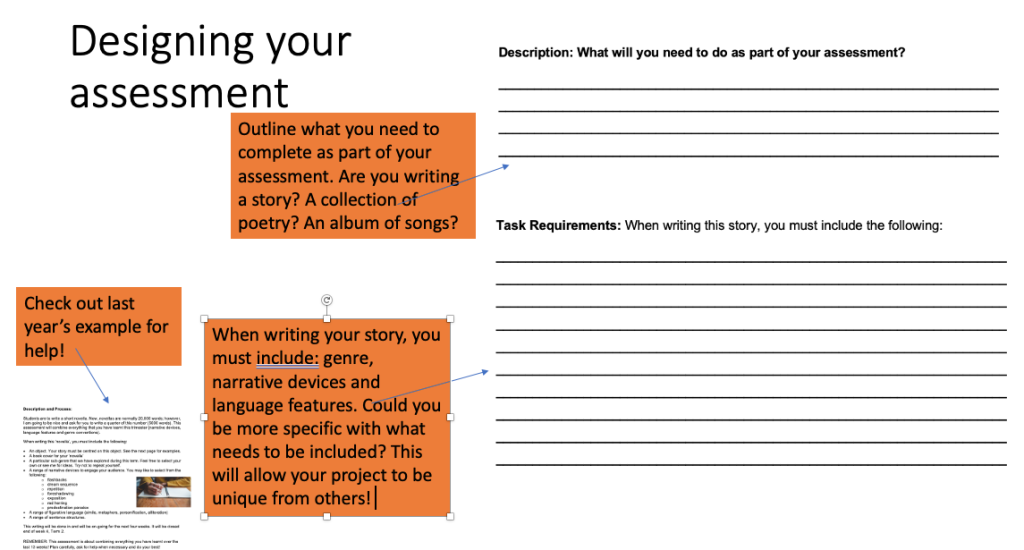2.1 Content and teaching strategies of the teaching area
2.3 Curriculum, assessment and reporting
3.1 Establish challenging learning goals
Earlier this term, I was looking over an assessment that I had used the previous year. It was reliable: a clear outline, connection with student learning and a rubric that was both challenging and offered breadth in student ability.
However, I didn’t want to deliver the assessment.
Why? It was too easy. It was too easy to just hand over an assessment that I knew the outcome of. I knew they would perform well because they were a strong class, but I needed another layer that would offer additional challenges to students beyond the requirements of the assessment.
And then it dawned on me: what would it be like if students designed their own assessment? 25 students, 25 unique assessments designed by them. They would be given the rubric and be shown what they had to achieve, but the road they took would be entirely their own.

Firstly, I outlined what I had used last year and the types of elements they would need to include when creating their own assessment. They had to include generic components like the time allocated to complete, suggested length, items included in story, narrative devices and language features.

Below, I outlined that students would choose which narrative devices they needed to include in their own creative work. They had to choose the requirements for which language features. Essentially, their own task outline had to be so detailed that anyone should pick it up and know what the requirements were.


Questions came about during the instruction: What is the word limit? Can I write 100 words? Sure, if you can meet the expectations of the rubric! Every response came back to: does it meet the requirements of the rubric? Is using one narrative device or language feature enough to achieve a high mark? Check the marking rubric.
Students began to see a strong connection between their own outline for the task and the expectations for how they would be graded – there was no room for short cuts, but plenty of space for choice.

After students completed their outlined, they had to complete a gallery walk. They looked for what was interesting and what could be improved.

Having students develop their own projects provides an opportunity to create choice and creativity in the classroom. Students have a wide variety passions, but it can be difficult to cast a wide need and capture these in our every day. By providing students with the choice to develop their own projects, we can allow them to carve their own path in the classroom.